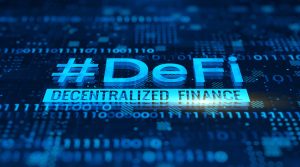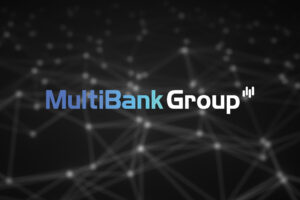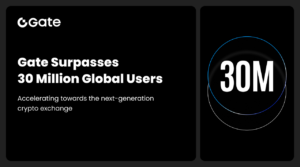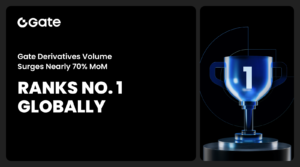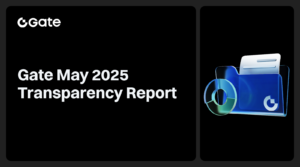How GameFi can Promote Financial Literacy and Education

In recent years, the world of blockchain and cryptocurrencies has introduced us to the concept of GameFi, a revolutionary new way to blend gaming and finance. With GameFi, players can earn cryptocurrencies, non-fungible tokens (NFTs), and other in-game assets while playing games, creating an opportunity for financial literacy and education. In this article, we will explore how GameFi can promote financial literacy and education and why it’s an essential tool for anyone looking to build a solid foundation of financial knowledge.
What is GameFi?
GameFi is a combination of gaming and DeFi (Decentralized Finance). DeFi is a decentralized financial system built on the blockchain, which allows users to conduct financial transactions without intermediaries. GameFi merges DeFi with gaming to create a new model for gaming that rewards players with cryptocurrencies and other assets for playing games. GameFi is built on the blockchain, which makes it transparent, decentralized, and secure.
GameFi as a Tool for Financial Literacy
GameFi can serve as an excellent tool for promoting financial literacy and education. The following are some of the ways GameFi can be used to teach financial literacy:
- Introduction to cryptocurrencies: GameFi games often reward players with cryptocurrencies, which introduces them to the world of cryptocurrencies. Players can learn about the different types of cryptocurrencies, their value, and how they are traded. This knowledge can be useful in the future, as cryptocurrencies become more widely adopted.
- Introduction to NFTs: NFTs are unique digital assets that are stored on the blockchain. In GameFi, players can earn NFTs as rewards for completing tasks, which introduces them to the concept of NFTs. Players can learn about the value of NFTs, how they are created, and how they are traded.
- Financial planning and budgeting: GameFi can be used to teach financial planning and budgeting. In GameFi, players can earn cryptocurrencies and other assets, which they can use to buy in-game items or trade on cryptocurrency exchanges. This introduces them to the concept of saving and investing. Players can learn how to manage their assets, set financial goals, and create a budget.
- Understanding market trends: GameFi games often simulate real-world markets, which can be used to teach players about market trends. Players can learn how to analyze market data, identify trends, and make informed investment decisions.
Benefits of GameFi for Financial Literacy
GameFi has several benefits when it comes to promoting financial literacy and education:
- Gamification of learning: GameFi games are designed to be fun and engaging, which makes learning financial literacy more enjoyable. By combining gaming and finance, GameFi creates a unique learning experience that can motivate players to learn more about financial literacy.
- Real-world applications: GameFi games often simulate real-world financial markets, which makes the learning experience more practical. Players can learn how to apply financial literacy skills in the real world, which can help them make better financial decisions in the future.
- Accessible to everyone: GameFi games are accessible to everyone, regardless of their financial background. Players can start with a small investment and gradually build their financial knowledge and skills. This makes GameFi an excellent tool for promoting financial literacy among underserved communities.
- Opportunity for financial gain: GameFi games offer players the opportunity to earn cryptocurrencies and other assets, which can be used for financial gain. This creates an incentive for players to learn about financial literacy and apply their skills in the real world.
Examples of GameFi Games Promoting Financial Literacy
Several GameFi games are currently promoting financial literacy and education. Here are some examples:
- Axie Infinity: Axie Infinity is a popular GameFi game that allows players to collect and breed creatures called Axies. Players can earn cryptocurrencies such as Axie Infinity Shards (AXS) and Small Love Potions (SLP) by playing the game. Axie Infinity teaches players about cryptocurrencies and how to manage their in-game assets. Players can trade their AXS and SLP on cryptocurrency exchanges or use them to buy in-game items. The game has become so popular that players in some countries are earning a living by playing Axie Infinity.
- The Sandbox: The Sandbox is another GameFi game that allows players to create and trade NFTs. Players can create their own digital assets, such as buildings, landscapes, and avatars, and sell them on the marketplace. The Sandbox teaches players about the value of NFTs, how to create them, and how to trade them. The game also has a virtual real estate market, which simulates the real-world real estate market, teaching players about market trends and investment strategies.
- Splinterlands: Splinterlands is a collectible card game that allows players to earn cryptocurrencies such as DEC and Dark Energy Crystals (DEC) by playing the game. Players can buy and sell cards on the marketplace or use them to compete in tournaments. Splinterlands teaches players about cryptocurrencies, how to manage their assets, and how to analyze market trends. The game has become so popular that some players are earning a living by playing Splinterlands.
Conclusion
GameFi is a revolutionary new way to blend gaming and finance, creating an opportunity for financial literacy and education. By introducing players to cryptocurrencies, NFTs, financial planning, and market trends, GameFi can promote financial literacy and education in a fun and engaging way. GameFi games offer players the opportunity to earn cryptocurrencies and other assets, which can be used for financial gain. With GameFi, anyone can start with a small investment and gradually build their financial knowledge and skills. GameFi is an excellent tool for promoting financial literacy among underserved communities and creating a more financially literate society.


